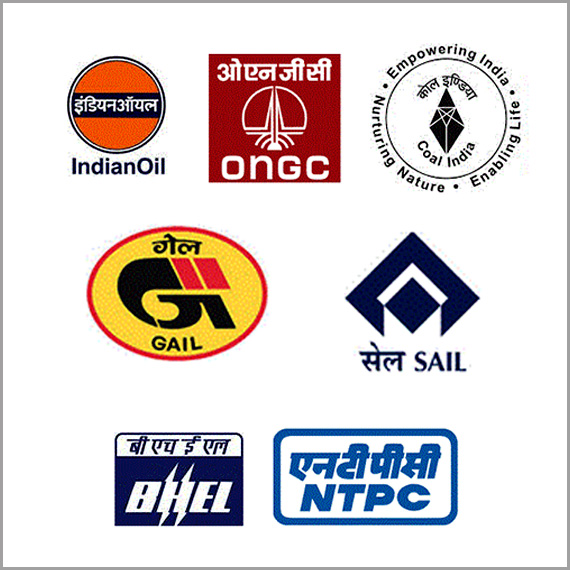
A state-owned enterprise in India is called a public sector undertaking (PSU) or a public sector enterprise. These companies are owned by the union government of India, or one of the many state or territorial governments, or both. The company stock needs to be majority-owned by the government to be a PSU. PSUs may be classified as Central Public Sector Enterprises (CPSEs), public sector banks (PSBs) or State Level Public Enterprises (SLPEs). CPSEs are administered by the Ministry of Heavy Industries and Public Enterprises.
When India achieved independence in 1947, India was primarily an agricultural country with a weak industrial base. The national consensus was in favour of rapid industrialisation of the economy which was seen as the key to economic development, improving living standards and economic sovereignty. Building upon the Bombay Plan, which noted the requirement of government intervention and regulation, the first Industrial Policy Resolution announced in 1948 laid down broad contours of the strategy of industrial development. Subsequently, the Planning Commission was constituted in March 1950 and the Industrial (Development and Regulation) Act was enacted in 1951 with the objective of empowering the government to take necessary steps to regulate industrial development. Prime Minister Jawaharlal Nehru promoted an economic policy based on import substitution industrialisation and advocated a mixed economy. He believed that the establishment of basic and heavy industry was fundamental to the development and modernisation of the Indian economy. India's second five year plan (1956–60) and the Industrial Policy Resolution of 1956 emphasised the development of public sector enterprises to meet Nehru's national industrialisation policy. Indian statistician Prasanta Chandra Mahalanobis was instrumental to its formulation, which was subsequntly termed the Feldman–Mahalanobis model.
The major consideration for the setting up of PSUs was to accelerate the growth of core sectors of the economy; to serve the equipment needs of strategically important sectors, and to generate employment and income. A large number of "sick units" were taken over from the private sector. Additionally, Indira Gandhi's government nationalised fourteen of India's largest private banks in 1969, and an additional six in 1980. This government-led industrial policy, with corresponding restrictions on private enterprise, was the dominant pattern of Indian economic development until the 1991 Indian economic crisis. After the crisis, the government began divesting its ownership of several PSUs to raise capital and privatise companies facing poor financial performance and low efficiency.
Various PSUs have been awarded additional financial autonomy. These companies are "public sector companies that have comparative advantages", giving them greater autonomy to compete in the global market so as to "support [them] in their drive to become global giants". Financial autonomy was initially awarded to nine PSUs as Navratna status in 1997. Originally, the term Navaratna meant a talisman composed of nine precious gems. Later, this term was adopted in the courts of Gupta emperor Vikramaditya and Mughal emperor Akbar, as the collective name for nine extraordinary courtiers at their respective courts.
In 2010, the government established the higher Maharatna category, which raises a company's investment ceiling from Rs. 1,000 crore to Rs. 5,000 crore. The Maharatna firms can now decide on investments of up to 15 per cent of their net worth in a project while the Navaratna companies could invest up to Rs 1,000 crore without explicit government approval. Two categories of "Miniratnas" afford less extensive financial autonomy.
Guidelines for awarding ratna status are as follow:
| Maharatna | Navratna | Miniratna Category-I | Miniratna Category-II | |
|---|---|---|---|---|
Eligibility |
Three years with an average annual net profit of over Rs. 2500 crore (earlier was 5,000 Cr), OR |
A score of 60 (out of 100), based on six parameters which include net profit, net worth, total manpower cost, total cost of production, cost of services, PBDIT (Profit Before Depreciation, Interest and Taxes), capital employed, etc., AND |
Have made profits continuously for the last three years or earned a net profit of Rs. 30 crore or more in one of the three years |
Have made profits continuously for the last three years and should have a positive net worth. |
Benefits for investment |
Rs. 1,000 crore - Rs. 5,000 crore, or free to decide on investments up to 15% of their net worth in a project |
up to Rs. 1,000 crore or 15% of their net worth on a single project or 30% of their net worth in the whole year (not exceeding Rs. 1,000 crores). |
up to Rs. 500 crore or equal to their net worth, whichever is lower. |
up to Rs. 300 crore or up to 50% of their net worth, whichever is lower. |
PSUs in India are also categorised based on their special non-financial objectives and are registered under Section 8 of Companies Act, 2013 (erstwhile Section 25 of Companies Act, 1956).
List of Public Sector Undertakings
As on 30 September 2015 there are 7 Maharatnas, 17 Navratnas and 73 Miniratnas. There are nearly 300 CPSEs in total.
List of Maharatnas
List of Navratna
List of Miniratna-I
List of Miniratna-II
Copyright © 2016 - All Rights Reserved - thecivilindia.com
Developed by BRS MEDIA